
Wine Culture and Information since 2002 - Volume 22
 Wine Culture and Information since 2002 - Volume 22 |
|
Issue 63, May 2008 |
Contents |
|
|
The Wine of the Same Old Cunning Ones |
|
What a beautiful country is Italy! Art, history, monuments, culture, land of saints and heroes. A beautiful place which is usually considered enchanted, favored by a good fate and by Mother Nature, with landscapes and places which take your breath away when you look at them. Then it comes the cooking: the Italian foods coloring the table are famous everywhere in the world, everywhere considered as tasty, refined and healthy. Can we can eventually forget about Italian wine? Of course not. High quality, a heritage of hundreds of grapes giving unique wines, with a variety which cannot be found in any other country of the world. Italian wine, an absolutely undeniable fact, is today among the best ones in the world, the remarkable job done by many producers has allowed Italy to reach remarkable results. A truly remarkable success, obtained with commitment and effort, something which would be a pity to lose because of some deplorable subjects who think they are more cunning than others, having no scruples and deceiving people, also at the cost of putting in danger other's health. These cunning subjects - although it would be better to call them idiots - are frequently responsible for destroying the good image of Italy and of its products. Deplorable subjects who believe they are superior and more intelligent than ohers - and showing at the same time their meanness and pettiness - while being aware of their incapacity, they believe it is normal, indeed cunning, to cheat on others, most of the times in a deplorable way. It is said men do not learn anything from hisroty: a sad truth of which we all see the results when we consider the errors the humanity makes and which could be avoided by simply remembering the tragic and disastrous results of past facts. In case they would have learnt something, for example, man would have understood the stupidity and inutility of war and conflicts, although he knows the devastating results they inevitably make, he still continues to make use of these methods, while making the same mistakes and showing all the times his low intelligence. Luckily, not all men are like that. There are many who have a sincere respect for others, many believe in honesty and correctness. Many understand the remarkable effort needed to get a result, also aware of the fact it takes very little to destroy something and all the efforts done. Reaching the top is always hard: one must always pay attention to everything and avoid to make mistakes which could be fatal and it takes very little to fall to the ground, even worse, to sink down. The cunning ones, in their absolute incapacity, take advantage of the job of others - therefore taking advantage of the success of those who worked hard in order to get a result - and in a deplorable way they always end up destroying the good image and respecability of all. Men never learn something from history: in this sense, Italians are certainly not an exception to this. It was not enough the damage done by the so called methanol wine scandal in the middle of the 1980s and how hard it was to recover from that and to rebuild the credibility of Italian wine: some idiots believe it is cunning to learn nothing from that lesson. In a reportage done by L'Espresso, one of the most famous Italian weekly magazines, was reported the Italian judiciary and the police are investigating on what has been defined as the biggest food fraud and sophistication discovered in Italy. According to the report published by L'Espresso, this sophistication would affect seventy millions liters of wine destined to bulk marketing and sold at a low price. In the wine confiscated by the police were found traces of fertilizers, carcinogens, water, sugar, hydrochloric acid and only one fifth of grape juice. Something which certainly leaves dismayed and speechless. How can it be possible there are such a cynic people having no scruples and put in danger the health of others? How can it be possible no one thought about verifying the quality and healthiness of such a huge quantity of wine, if we consider the remarkable quantity and it was destined to a high number of consumers? Investigations are still in progress and until they make things clear, every accusation or supposition could be unfounded. And we certainly hope these facts will be denied soon. Was it not enough the hard lesson of the methanol wine scandal, a sad fact which costed the life of 19 people and 15 have become blind, as well as the dmage done to the entire Italian wine industry and of its credibility in the world? Things do not certainly get better to know the sophisticated wine was destined at a low price market - generally sold from 70 cents and 2 euros per liter - sold in supermarkets and which should not involve, at least in theory, the so called quality wine. This does not certainly save anyone: we all are consumers, we all can be victims of such deplorable facts. it is disconcerting to know there are cunning subjects who for their deplorable interest put in danger the health and life of others, subjects who must certainly pay a very high price in terms of justice. It is not acceptable the existence of such a deplorable culture, so unrespectful of others, only to ensure the profit and the economic advantage of few ones. In the pages of the weekly magazine L'Espresso are also reported other frauds which, at least in this case, are not dangerous for the health. It is read some producers of Brunello di Montalcino would have added to Sangiovese Grosso - the only grape allowed by the production disciplinary - other varieties in order to give the wine specific organoleptic qualities. Also in this case, the damage of image is certainly remarkable and we hope - in case these facts are proved and confirmed - they will take proper measures against these cunning subects. Once again, we wonder how they do the controls the law requires to be done, while remembering the disciplinary regulating the production of a wine is a law and, as such, it should be respected and made sure it is respected. In this sense, the consortiums for the safeguarding of wines should be more severe with their members, first of all, in order to safeguard the job of honest producers as well as the image of their wines. The same must do the law: dignity and health of people come before everything else; certainly before the economic and personal interests of the “same old cunning ones”. We strongly hope this fact will be denied, for the good of Italian wine, for the good of health and dignity of people.
|
||||
Comparing Prosecco di ValdobbiadeneAmong the most famous sparkling wines of Italy, Prosecco is produced in the Valdobbiadene and Conegliano areas and it takes its name from the grape with which it is made from |
|
Among the many bubbles of Italy, the ones produced in the Valdobbiadene and Conegliano areas certainly are among the most famous ones in the world. We are talkng about Prosecco, the white berried grape from which it is produced this renowned sparkling wine and which - because of its name - it sometimes causes confusion among consumers. Despite the name would make one think about particular organoleptic qualities, Prosecco is a grape, not a style of wine basically dry (secco means dry in Italian), something which is frequently believed by many. Even worse the reductive use of this term and which is frequently used by people in charge of serving wine: that deleterious term prosecchino - most of the times used for some disputable sparkling wines and of doubt quality - something which makes one think about an “ordinary” or low quality wine. Prosecco, once again, is a white berried grape from which are produced wines - also in the dry style - and of which the most famous one is the sparkling style produced in the area of Denominazione di Origine Controllata (DOC) of Valdobbiadene and Conegliano, in Veneto in the province of Treviso. The origin of Prosecco grape is pretty uncertain. According to some, this grape comes from Prosecco village, in the province of Trieste, therefore in Friuli Venezia Giulia region, where the grape is called Glera. According to other hypothesis, Prosecco comes from the Colli Euganei area, in the territory of Padua, where the grape is known as Serpino. Another theory believes Prosecco grape comes from the ancient Pucino grape, known since the times of ancient Romans. An important job of selection and improvement of the variety was done by the Experiental Institute for Viticulture of Conegliano. In particular, Prosecco was used by Prof. Luigi Manzoni during his important experiments in the 1930s, with which he created the Incrocio Manzoni 2.15 grape by crossing it with Cabernet Sauvignon. In the Conegliano and Valdobbiadene areas, Prosecco is produced in the styles slightly sparkling, which can be recognized by the so called “tappo raso” (Italian for flat cork) and fastened with a string, and sparkling - the most common style - produced with the Martinotti method, also known as Carmat method.
|
|
Among the production areas of this wine, one is distinguished for the particular quality of its grapes: San Pietro di Barbozza, in the municipality of Valdobbiadene. Here are in fact found favorable environmental conditions, with hilly lands and always exposed to the sun, a surface of just 107 hectares from which are harvested the grapes destined to the famous Prosecco Superiore di Cartizze. Prosecco di Valdobbiadene e Conegliano is produced in tanks by using the method invented by wine maker Federico Martinotti in 1895, at that time headmaster of the “Royal School of Enology of Asti”. This method was then revised and improved in 1907 by Eugène Charmat - a French engineer - and today this method is mainly identified with his name. According to the production disciplinary, Prosecco di Valdobbiadene e Conegliano can be produced in any style allowed by sparkling wine laws, with the exception of “extra-brut” and “sweet” styles. In the production of this wine is allowed a maximum of 15% of the white berried grapes Verdiso, Biancheria, Perera and Prosecco Lungo.
The most common style of Prosecco certainly is extra dry, although today it is getting more and more common, as well as appreciated, the brut style. Another style to be mentioned is dry, therefore pretty sweet, which offers interesting enogastronomical possibilities in the matching with desserts. The first wine selected for our comparative tasting is Bortolin's Prosecco di Valdobbiadene Extra Dry Rù, produced with 100% Prosecco. The second wine if Ruggeri's Prosecco di Valdobbiadene Superiore di Cartizze, also in this case produced with 100% Prosecco. The last wine of the comparative tasting is Merotto's Prosecco di Valdobbiadene Dry La Primavera di Barbara, sweeter than the previous ones and mainly produced with Prosecco to which was added a small quantity of Perera grape. The three wines will be served at the temperature of 10° C (50° F) and served in three ISO tasting glasses.
|
||||||||
|
Just like all sparkling wines, also in Prosecco di Valdobbiadene e Conegliano the evaluation of perlage - the joyous dance of bubbles moving from the bottom of the glass upwads the surface - represents an important aspect. Concerning this quality it should be said perlage in sparkling wines produced with the Martinotti method - or Charmat - is generally coarser than the one observed in “classic method” sparkling wines. Bubbles usually have a bigger size than classic method and their persistence is usually shorter. The color of Prosecco generally show greenish yellow hues - sometimes straw yellow - with evident nuances of greenish yellow. Prosecco di Valdobbiadene is generally consumed within two years from production in order to better appreciate its fresh qualitities, therefore the evolution of color over time is a characteristic which can be ignored in this wine. We will begin with the evaluation of the first wine, Bortolin's Prosecco di Valdobbiadene Extra Dry Rù. By holding the glass in vertical position, we will evaluate the development of perlage: we will see a good quanity of bubbles having a small size, of good persstence. By tilting the glass on a white surface, we will continue the evaluation by examining the color. At the base of the glass will be observed a pale straw yellow color with evident nuances of greenish yellow, observed at the edge of the wine towards the opening of the glass. Also the second wine - Ruggeri's Prosecco di Valdobbiadene Superiore di Cartizze - shows a fine and persistent perlage, with a brilliant greenish yellow color - paler than the previous wine - and nuances of greenish yellow. Let's now pass to the evaluation of the third wine of our comparative tasting: Merotto's Prosecco di Valdobbiadene Dry La Primavera di Barbara. Also in this wine it can be observed a good perlage - fine and persistent - and a brilliant greenish yellow color and nuances of greenish yellow.
|
|
Thanks to the method used for the production of Prosecco di Valdobbiadene, fresh aromas of flowers and fruit will be the organoleptic qualities mainly perceived to the nose. As opposed to classic method - which favors the development of complex aromas - with the Charmat method are being obtained sparkling wines in a shorter time, favoring the keeping of “fresher” aromas typical in white wines. In Prosecco di Valdobbiadene will be mainly perceived aromas of fruit and flowers, sometimes dried fruit as well. Among the most common fruit aromas in Prosecco are mentioned apple, pear and peach, however in this wine are also find aromas recalling tropical fruits, such as pineapple, lychee and banana, as well as aromas recalling more common fruits such as citrus fruits and plum. The world of flowers of Prosecco is colored of white and yellow. Broom, wistaria, hawthorn and acacia are the most frequent flowery aromas found in Prosecco di Valdobbiadene, rarely elder, chamomile and jasmine. We will begin the evaluation of aromas from the first wine of our comparative tasting: Bortolin's Prosecco di Valdobbiadene Extra Dry Rù. By holding the glass in vertical position - and without swirling - we will evaluate opening aromas, that is the aromas made of “light” volatile substances requiring a small quantity of oxygen in order to be appreciated. To the nose will be perceived clean and intense aromas of apple, pear and pineapple: a pretty common opening for Prosecco di Valdobbiadene. Let's now proceed by swirling the glass, in order to favor the volatilization of “heavy” aromatic substances. The aromatic sequence of this first wine will be completed with aromas of hawthorn, wistaria, broom, peach and plum, also in this case, very frequent aromas in Prosecco. It should be noticed the freshness of aromas and the lack of complex sensations, very diferent from what can be appreciated in a classic method sparkling wine. Let's now pass to the evaluation of the aromas of the second wine of our comparative tasting: Ruggeri's Prosecco di Valdobbiadene Superiore di Cartizze. By holding the glass in vertical position and without swirling, we will evaluate opening aromas which will be characterized by banana, pineapple and lychee, a pretty “exotic” opening and certainly different from the previous wine. Let's now swirl the glass in order to appreciate all the other aromas. It will be perceived aromas of acacia, wistaria, green apple, pear, peach and a pleasing hint of almond. Let's now pass to Merotto's Prosecco di Valdobbiadene Dry La Primavera di Barbara. The opening of this third wine is characterized by aromas of pear, apple and pineapple, very pleasing and clean. After having swirled the glass, we will proceed with the evaluation of other aromas which will complete the olfactory profile of the wine. From the glass will be perceived aromas of peach, tangerine, wistaria, citrus fruits, hawthorn, plum and a pleasing hint of sage.
|
||||
|
Just like all sparkling wines, one of the main qualities during the tasting is effervescence produced by carbon dioxide. Effervescence in sparkling wines produced with the Charmat method usually has a different behaviour from the ones produced with the classic method, that is refermented in bottle. In Charmat method sparkling wines the release of carbon dioxide is quicker and “immediate”, therefore the perception of effervescence will be higher. Because of the many production styles, also sweetness represents an important aspect: from brut to sweet style, sugar will significantly affect the gustatory qualities of the wine, in particular the perception of acidity. The alcohol by volume in Prosecco di Valdobbiadene e Conegliano is generally low, it rarely goes beyond 12.5%, with an average content of about 11.5%. The first wine of which we will evaluate organoleptic qualities in taste is Bortolin's Prosecco di Valdobbiadene Extra Dry Rù. The attack of this wine is efervescent and crisp, with a slight sweetness, however appreciable, which makes the wine balanced. It should be noticed the good correspondence to the nose, in particular apple and pear. Let's now proceed to the evaluation of Ruggeri's Prosecco di Valdobbiadene Superiore di Cartizze. Also the attack of this Prosecco is effervescent and crisp, with the usual slight sweetness, typical in most of the sparkling wines produced in Valdobbiadene and Conegliano areas. The attack of the third wine - Merotto's Prosecco di Valdobbiadene Dry La Primavera di Barbara - is not so different from the previous ones, with an evident effervescence and crispness, however in this case, sweetness is pretty perceptible and very pleasing. It should also be noticed the structure of these wines: a pretty light body, however apropriate to the characeristics of Prosecco di Valdobbiadene.
|
|
One of the qualities which is mainly appreciated in Prosecco di Valdobbiadene e Conegliano is represented by freshness, both in aromas and flavors, qualities which will be well perceptible also in the final phase of the tasting. The finish of Bortolin's Prosecco di Valdobbiadene Extra Dry Rù is persistent, leaving in the mouth clean and intense flavors of apple, pear and plum. The finish of Ruggeri's Prosecco di Valdobbiadene Superiore di Cartizze is persistent with pleasing flavors of pear, banana and pineapple. Also the finish of the third wine of our comparative tasting - Merotto's Prosecco di Valdobbiadene Dry La Primavera di Barbara - is persistent and leaves in the mouth pleasing and intense flavors of pear, pineapple and peach to which is added the pleasing sensation of sweetness. It should also be noticed the sensation of crispness which can be perceived in the mouth after having swallowed the wine, as well as elegant and clean flavors.
|
Wines of the Month |
|
|
|
Score legend Prices are to be considered as indicative. Prices may vary according to the country or the shop where wines are bought |
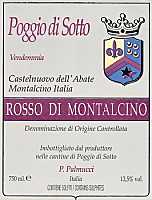
|
|
Rosso di Montalcino 2005 |
|
| Fattoria Poggio di Sotto (Tuscany, Italy) | |
| Grapes: Sangiovese Grosso | |
| Price: € 34.00 | Score: |
| This Rosso di Montalcino shows a brilliant ruby red color and nuances of garnet red, moderate transparency. The nose reveals intense, clean, pleasing and refined aromas that start with hints of black cherry, plum and violet followed by aromas of raspberry, blueberry, vanilla, pink pepper, chocolate and menthol. The mouth has good correspondence to the nose, a tannic attack and pleasing crispness, however balanced by alcohol, good body, intense flavors. The finish is persistent with flavors of black cherry and plum. This Rosso di Montalcino ages for two years in cask. | |
| Food Match: Roasted meat, Stewed and braised meat, Hard cheese | |
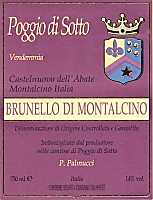
|
|
Brunello di Montalcino 2003 |
|
| Fattoria Poggio di Sotto (Tuscany, Italy) | |
| Grapes: Sangiovese Grosso | |
| Price: € 75.00 | Score: |
| This Brunello di Montalcino shows a brilliant ruby red color and nuances of garnet red, moderate transparency. The nose denotes intense, clean, pleasing, refined and elegant aromas that start with hints of black cherry, plum and violet followed by aromas of blackberry, blueberry, vanilla, tobacco, cocoa, menthol and leather. The mouth has good correspondence to the nose, a tannic attack and pleasing crispness, however balanced by alcohol, full body, intense flavors. The finish is persistent with flavors of black cherry, plum and blackberry. This Brunello di Montalcino ages for 4 years in cask followed by at least 12 months of aging in bottle. | |
| Food Match: Game, Roasted meat, Braised and stewed meat, Hard cheese | |

|
|
Tredici di Terre Verdiane Fortana |
|
| Cantine Ceci (Emilia Romagna, Italy) | |
| Grapes: Fortana | |
| Price: € 9.50 | Score: |
| Tredici di Terre Verdiane Fortana shows a brilliant ruby red color and nuances of purple red, moderate transparency, good effervescence. The nose denotes intense, clean, pleasing and refined aromas that start with hints of black cherry, blackberry and raspberry followed by aromas of strawberry, blueberry, violet and cyclamen. The mouth has good correspondence to the nose, an effervescent attack, pleasing sweetness and astringency, however balanced by alcohol, good body, intense flavors, pleasing crispness. The finish is persistent with flavors of black cherry, blueberry and raspberry. Tredici di Terre Verdiane Fortana ferments in tanks for 2-3 months. | |
| Food Match: Fruit desserts, Cream desserts | |

|
|
Otello Nero di Lambrusco |
|
| Cantine Ceci (Emilia Romagna, Italy) | |
| Grapes: Lambrusco Maestri | |
| Price: € 8.00 | Score: |
| Otello Nero di Lambrusco shows a deep ruby red color and nuances of purple red, little transparency, effervescent. The nose reveals intense, clean, pleasing and refined aromas that start with hints of black cherry, raspberry and blueberry followed by aromas of violet, strawberry, blackberry, plum and geranium. The mouth has good correspondence to the nose, an effervescent attack, pleasing crispness and astringency, however balanced by alcohol, good body, intense flavors. The finish is persistent with flavors of black cherry, strawberry and blueberry. Otello Nero di Lambrusco ferments for 3 months in tanks. | |
| Food Match: Cold cuts, Pasta with meat, Boiled meat | |
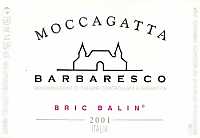
|
|
Barbaresco Bric Balin 2001 |
|
| Moccagatta (Piedmont, Italy) | |
| Grapes: Nebbiolo | |
| Price: € 36.00 | Score: |
| Barbaresco Bric Balin shows a brilliant ruby red color and nuances of brick red, moderate transparency. The nose reveals intense, clean, pleasing, refined and elegant aromas which start with hints of cherry, plum and violet followed by aromas of raspberry, rose, vanilla, tobacco, cocoa, cinnamon, leather, licorice, pink pepper, mace and menthol. The mouth has excellent correspondence to the nose, a tannic attack and pleasing crispness, however balanced by alcohol, full body, intense flavors, agreeable. The finish is persistent with flavors of cherry, plum and raspberry. A well made wine. Barbaresco Bric Balin ages for 18 months in barrique. | |
| Food Match: Game, Roasted meat, Braised and stewed meat, Hard cheese | |
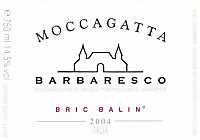
|
|
Barbaresco Bric Balin 2004 |
|
| Moccagatta (Piedmont, Italy) | |
| Grapes: Nebbiolo | |
| Price: € 32.00 | Score: |
| Barbaresco Bric Balin shows a brilliant ruby red color and nuances of brick red, moderate transparency. The nose reveals intense, clean, pleasing, refined and elegant aromas which start with hints of cherry, plum and violet followed by aromas of raspberry, strawberry, rose, vanilla, tobacco, blueberry, pink pepper, licorice, chocolate, cinnamon, mace and menthol. The mouth has excellent correspondence to the nose, a tannic attack and pleasing crispness, however balanced by alcohol, full body, intense flavors, agreeable. The finish is very persistent with long flavors of cherry, plum and raspberry. A well made wine. Barbaresco Bric Balin ages for 18 months in barrique. | |
| Food Match: Game, Roasted meat, Braised and stewed meat, Hard cheese | |
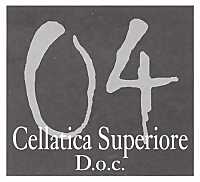
|
|
Cellatica Superiore 2004 |
|
| Cà del Vent (Lombardy, Italy) | |
| Grapes: Barbera (30%), Marzemino (30%), Incrocio Terzi N. 1 (25%), Schiava Gentile (5%), Cabernet Sauvignon (5%), Merlot (5%) | |
| Price: € 10.00 | Score: |
| This wine shows an intense ruby red color and nuances of ruby red, little transparency. The nose denotes intense, clean, pleasing and refined aromas that start with hints of black cherry and plum followed by aromas of blueberry, violet, vanilla, cinnamon and fern. The mouth has good correspondence to the nose, a tannic attack and however balanced by alcohol, good body, intense flavors, pleasing crispness. The finish is persistent with flavors of black cherry, blueberry and plum. This Cellatica Superiore ages for 12 months in barrique followed by at least 18 months of aging in bottle. | |
| Food Match: Broiled meat and barbecue, Roasted meat, Stewed meat | |
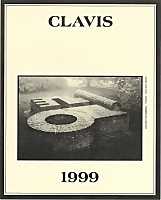
|
|
Cellatica Superiore Clavis 1999 |
|
| Cà del Vent (Lombardy, Italy) | |
| Grapes: Barbera (30%), Marzemino (30%), Incrocio Terzi N. 1 (25%), Schiava Gentile (5%), Cabernet Sauvignon (5%), Merlot (5%) | |
| Price: € 28.00 | Score: |
| Cellatica Superiore Clavis shows an intense ruby red color and nuances of garnet red, little transparency. The nose denotes intense, clean, pleasing and refined aromas that start with hints of plum, black cherry and blueberry followed by aromas of dried violet, vanilla, cocoa, tobacco, leather, eucalyptus, licorice and rhubarb. The mouth has good correspondence to the nose, a tannic attack and however balanced by alcohol, good body, intense flavors, agreeable. The finish is persistent with flavors of plum, black cherry and blueberry. Cellatica Superiore Clavis ages for 24 months in barrique followed by at least 5 years of aging in bottle. | |
| Food Match: Roasted meat, Stewed and braised meat, Hard cheese | |
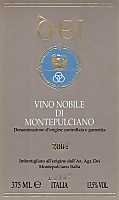
|
|
Vino Nobile di Montepulciano 2004 |
|
| Dei (Tuscany, Italy) | |
| Grapes: Prugnolo Gentile (80%), Canaiolo Nero (15%), Mammolo (5%) | |
| Price: € 15.75 | Score: |
| This Vino Nobile di Montepulciano shows an intense ruby red color and nuances of garnet red, moderate transparency. The nose reveals intense, clean, pleasing and refined aromas which start with hints of black cherry, plum and violet followed by aromas of raspberry, rose, vanilla, tobacco, cinnamon, chocolate and pink pepper. The mouth has good correspondence to the nose, a tannic attack and however balanced by alcohol, full body, intense flavors. The finish is persistent with flavors of black cherry, plum and raspberry. This Vino Nobile di Montepulciano ages for at least 24 months in cask followed by 6 months of aging in bottle. | |
| Food Match: Game, Roasted meat, Braised and stewed meat, Hard cheese | |
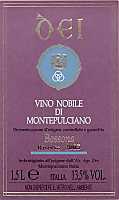
|
|
Vino Nobile di Montepulciano Riserva Bossona 2003 |
|
| Dei (Tuscany, Italy) | |
| Grapes: Prugnolo Gentile | |
| Price: € 27.00 | Score: |
| Vino Nobile di Montepulciano Riserva Bossona shows an intense ruby red color and nuances of garnet red, moderate transparency. The nose reveals intense, clean, pleasing, refined and elegant aromas which start with hints of black cherry, plum and violet followed by aromas of blueberry, rose, tobacco, raspberry, vanilla, chocolate, cinnamon, pink pepper, mace and menthol. The mouth has good correspondence to the nose, a tannic attack and pleasing crispness, however balanced by alcohol, full body, intense flavors. The finish is persistent with flavors of black cherry, plum and blueberry. A well made wine. It ages for 24 months in cask followed by 12 months of aging in bottle. | |
| Food Match: Game, Roasted meat, Braised and stewed meat, Hard cheese | |
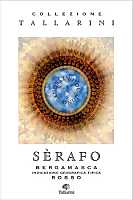
|
|
Serafo 2005 |
|
| Tallarini (Lombardy, Italy) | |
| Grapes: Cabernet Sauvignon (60%), Merlot (40%) | |
| Price: € 22.00 | Score: |
| Serafo shows a brilliant ruby red color and nuances of ruby red, little transparency. The nose denotes intense, clean, pleasing and refined aromas that start with hints of black cherry, plum and black currant followed by aromas of violet, vanilla, eucalyptus, bell pepper, chocolate and tobacco. The mouth has good correspondence to the nose, a tannic attack and however balanced by alcohol, good body, intense flavors. The finish is persistent with flavors of plum, black currant and black cherry. Serafo ages for 12 months in barrique followed by at least 18 months of aging in bottle. | |
| Food Match: Roasted meat, Braised and stewed meat with mushrooms, Hard cheese | |
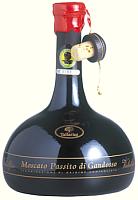
|
|
Valcalepio Moscato Passito di Gandosso 2003 |
|
| Tallarini (Lombardy, Italy) | |
| Grapes: Moscato di Scanzo | |
| Price: € 39.50 - 500ml | Score: |
| Valcalepio Moscato Passito di Gandosso shows a brilliant ruby red color and nuances of garnet red, moderate transparency. The nose reveals intense, clean, pleasing and refined aromas which start with hints of grape, strawberry and raspberry followed by aromas of plum, cyclamen, geranium, vanilla, pink pepper, cinnamon and clover. The mouth has good correspondence to the nose, a sweet and slightly tannic attack, pleasing crispness, however balanced by alcohol, good body, intense flavors, agreeable. The finish is persistent with flavors of strawberry, raspberry and cherry. A part of this wine ages in cherry wood casks. | |
| Food Match: Fruit tarts | |
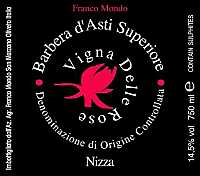
|
|
Barbera d'Asti Superiore Nizza Vigna delle Rose 2004 |
|
| Franco Mondo (Piedmont, Italy) | |
| Grapes: Barbera | |
| Price: € 12.00 | Score: |
| Barbera d'Asti Superiore Nizza Vigna delle Rose shows an intense ruby red color and nuances of garnet red, little transparency. The nose reveals intense, clean, pleasing and refined aromas that start with hints of cherry, plum and violet followed by aromas of vanilla, tobacco, chocolate and menthol. The mouth has good correspondence to the nose, a tannic attack and however balanced by alcohol, good body, intense flavors. The finish is persistent with flavors of cherry and plum. This barbera ages for few months in barrique. | |
| Food Match: Stuffed pasta with mushrooms, Broiled meat and barbecue, Stewed meat with mushrooms | |
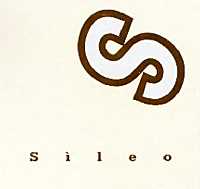
|
|
Piemonte Moscato Passito Sileo 2003 |
|
| Franco Mondo (Piedmont, Italy) | |
| Grapes: Moscato Bianco | |
| Price: € 16.50 - 500ml | Score: |
| This wine shows a brilliant amber yellow color and nuances of amber yellow, transparent. The nose reveals intense, clean, pleasing and refined aromas that start with hints of raisin, fig jam and candied fruits followed by aromas of dried apricot, quince jam, peach jam, date, lavender, vanilla, honey, citrus fruit peel and almond. The mouth has good correspondence to the nose, a sweet and round attack, however balanced by alcohol, good body, intense flavors, agreeable. The finish is persistent with flavors of raisin, fig jam and dried apricot. Piemonte Moscato Passito Sileo ferments and ages in barrique. | |
| Food Match: Confectionery, Fruit tarts, Hard and piquant cheese | |
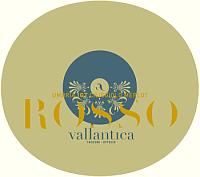
|
|
Vallantica Rosso 2006 |
|
| Vallantica (Umbria, Italy) | |
| Grapes: Ciliegiolo (60%), Merlot (40%) | |
| Price: € 7.80 | Score: |
| Vallantica Rosso shows a brilliant ruby red color and nuances of ruby red, moderate transparency. The nose denotes intense, clean and pleasing aromas that start with hints of cherry, plum and violet followed by aromas of blueberry, raspberry, strawberry and cyclamen. The mouth has good correspondence to the nose, a slightly tannic attack and however balanced by alcohol, good body, intense flavors. The finish is persistent with flavors of cherry, plum and raspberry. Vallantica Rosso ages in steel tanks. | |
| Food Match: Broiled meat and barbecue, Stewed meat with mushrooms | |
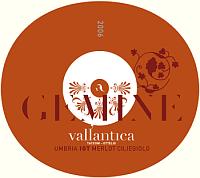
|
|
Gemine 2006 |
|
| Vallantica (Umbria, Italy) | |
| Grapes: Merlot (60%), Ciliegiolo (40%) | |
| Price: € 19.20 - 1.50 l | Score: |
| Gemine shows an intense ruby red color and nuances of garnet red, moderate transparency. The nose reveals intense, clean, pleasing and refined aromas which start with hints of black cherry, plum and black currant followed by aromas of violet, vanilla, tobacco and pink pepper. The mouth has good correspondence to the nose, a slightly tannic attack and however balanced by alcohol, good body, intense flavors. The finish is persistent with flavors of black cherry, plum and black currant. Gemine ages for 12 months in barrique followed by 3 months of aging in bottle. | |
| Food Match: Roasted meat, Braised and stewed meat, Hard cheese | |
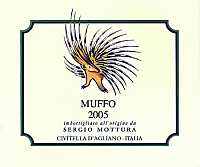
|
|
Muffo 2005 |
|
| Sergio Mottura (Latium, Italy) | |
| Grapes: Grechetto | |
| Price: € 17.80 - 375ml | Score: |
| Muffo shows a brilliant amber yellow color and nuances of amber yellow, transparent. The nose denotes intense, clean, pleasing, refined and elegant aromas that start with hints of dried apricot, date and honey followed by aromas of quince jam, chestnut, citron, almond, lavender, stewed apple, vanilla, stewed pear, citrus fruit peel and nail polish. The mouth has good correspondence to the nose, a sweet and round attack, however balanced by alcohol, good body, intense flavors, agreeable. The finish is persistent with flavors of dried apricot, date and honey. A well made wine. Muffo ages in barrique for 12 months followed by 6 months of aging in bottle. | |
| Food Match: Dried fruit tarts, Confectionery, Hard cheese | |
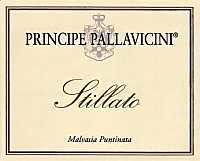
|
|
Stillato 2006 |
|
| Principe Pallavicini (Latium, Italy) | |
| Grapes: Malvasia del Lazio | |
| Price: € 13.50 - 500ml | Score: |
| Stillato shows a brilliant amber yellow color and nuances of amber yellow, transparent. The nose reveals intense, clean, pleasing, refined and elegant aromas that start with hints of raisin, dried fig and dried apricot followed by aromas of candied fruits, quince jam, date, vanilla, honey, almond and lavender. The mouth has good correspondence to the nose, a sweet and round attack, however balanced by alcohol, good body, intense flavors, agreeable. The finish is persistent with flavors of dried apricot, raisin and almond. Stillato ages for 10 months in barrique. | |
| Food Match: Confectionery, Dried fruit tarts | |
News |
|
In this section are published news and information about events concerning the world of wine and food. Whoever is interested in publishing this kind of information can send us a mail to our address.
|
AquavitaeReview of Grappa, Distillates and Brandy |
|
|
| Distillates are rated according to DiWineTaste's evaluation method. Please see score legend in the "Wines of the Month" section. |

|
|
Grappa di Vino Nobile di Montepulciano |
|
| Dei (Tuscany, Italy) | |
| (Distiller: Distilleria Nannoni) | |
| Raw matter: Pomace of Prugnolo Gentile, Canaiolo Nero, Mammolo | |
| Price: € 30.00 - 50cl | Score: |
| This grappa is limpid, crystalline and colorless. The nose reveals intense, clean and pleasing aromas of black cherry, plum, raspberry, hazelnut, pear, violet and licorice, with almost imperceptible alcohol pungency. In the mouth has intense flavors, with perceptible alcohol pungency and which tends to dissolve rapidly, good correspondence to the nose, balanced sweetness, pleasing roundness, agreeable. The finish is persistent with flavors of plum, black cherry and hazelnut. This grappa is distilled with steam operated discontinuous alembic still. Alcohol 42%. | |
Wine Parade |
|
|
| The best 15 wines according to DiWineTaste's readers. To express your best three wines send us an E-mail or fill in the form available at our WEB site. |
| Rank | Wine, Producer | |
|---|---|---|
| 1 |
| Bradisismo 2003, Inama (Italy) |
| 2 |
| Barolo Bussia 2001, Prunotto (Italy) |
| 3 |
| Collio Bianco Col Dis˘re 2004, Russiz Superiore (Italy) |
| 4 |
| San Leonardo 2001, Tenuta San Leonardo (Italy) |
| 5 |
| Barolo Cannubi Boschis 2001, Sandrone (Italy) |
| 6 |
| Wine Obsession 2001, Vignamaggio (Italy) |
| 7 |
| Amarone della Valpolicella Classico 2000, Zenato (Italy) |
| 8 |
| Chianti Classico Riserva Novecento 2000, Dievole (Italy) |
| 9 |
| Sforzato di Valtellina Canua 2001, Conti Sertoli Salis (Italy) |
| 10 |
| Blanc des Rosis 2006, Schiopetto (Italy) |
| 11 |
| Sforzato di Valtellina San Domenico 2002, Triacca (Italy) |
| 12 |
| Soave Classico Monte Alto 2004, Ca' Rugate (Italy) |
| 13 |
| Sagrantino di Montefalco Collepiano 2003, Arnaldo Caprai (Italy) |
| 14 |
| Aglianico del Vulture La Firma 2004, Cantine del Notaio (Italy) |
| 15 |
| Sangiovese di Romagna Superiore Riserva Thea 2005, Tre Monti (Italy) |
| |||||||
Privacy Policy | |||||||


| Copyright © 2002-2024 Antonello Biancalana, DiWineTaste - All rights reserved |
| All rights reserved under international copyright conventions. No part of this publication and of this WEB site may be
reproduced or utilized in any form or by any means, electronic or mechanical, without permission in writing from DiWineTaste. |